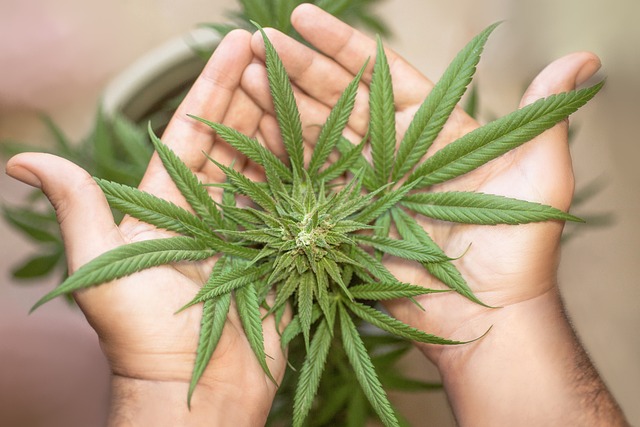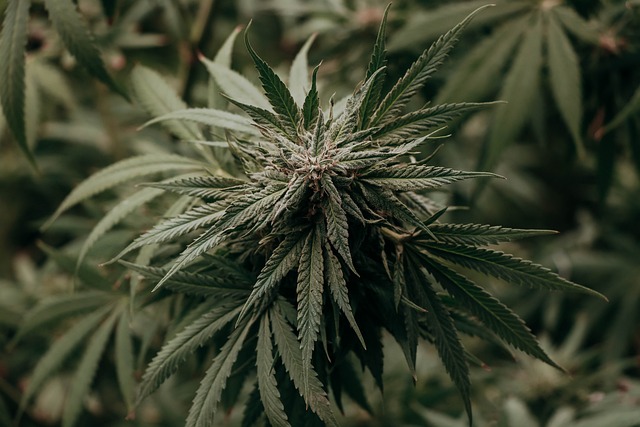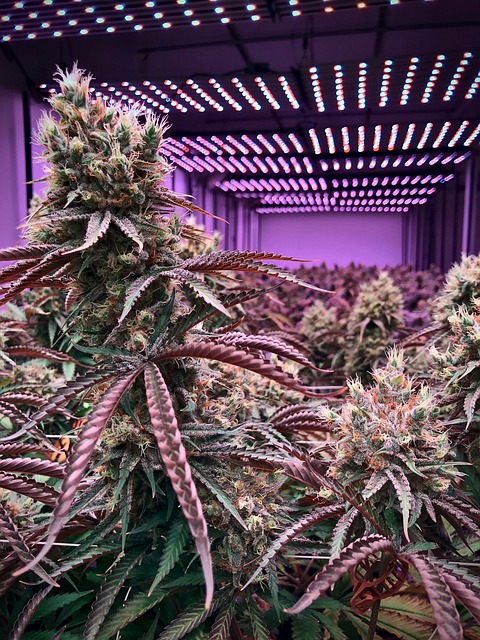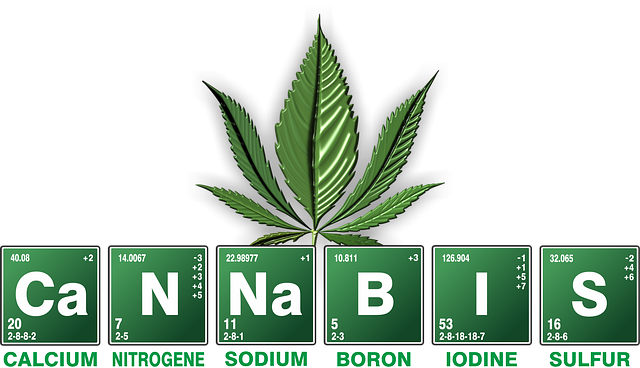THCA (Tetrahydrocannabinolic Acid), a non-psychoactive compound found in hemp that has garnered attention for its potential health benefits, is now legally recognized and regulated within the European Union, where CBD products with minimal THC content have been legalized. The EU's approach to THCA reflects a commitment to understanding its therapeutic properties, with member states at the forefront of research and innovation in this area. The industry has adapted by offering various THCA flower products, including smokable flowers, edibles, and topicals, catering to consumers interested in cannabinoids' wellness effects without psychoactive influence. Legal cultivation of THCA-rich hemp must adhere strictly to EU regulations, ensuring THCA levels are below 0.2% THC by dry weight. Cultivators employ best practices such as precise timing for harvesting, controlled drying conditions, and GMP-compliant processing to maintain product safety and quality. Advanced extraction methods like CO2 or ethanol extraction are utilized, with products falling under the EU's Novel Food Regulation and CBD regulations. Research is ongoing into THCA's anti-inflammatory, antiemetic, and neuroprotective properties, indicating its potential for treating various health issues including pain and inflammation, without psychoactive effects. The EU's regulatory framework ensures the availability of these products while supporting scientific investigation into THCA's full potential, establishing a robust legal market for THCA-rich hemp products in EU countries.
Explore the burgeoning landscape of THCA flower tips, a topic gaining traction amidst the evolving regulations of EU countries. This article delves into the emergence and legality of CBD-rich cannabis, offering insights into harvesting and processing practices that align with stringent EU standards. We’ll uncover the medicinal benefits of THCA, highlighting its healing potential within the legal framework of hemp cultivation in Europe. With a focus on cultivation and care, readers will glean essential tips for growing high-quality, legal THCA flowers, ensuring compliance while maximizing yield and potency. Join us as we navigate the intricacies of THCA legality and cultivation across EU nations.
- Understanding THCA Flower: The Emergence of CBD-rich Cannabis in EU Legality
- Harvesting and Processing: Best Practices for THCA-rich Flowers in Compliance with EU Regulations
- Medicinal Benefits of THCA: A Closer Look at the Healing Potential of EU-legal Hemp Flowers
- Cultivation and Care: Essential Tips for Growing High-Quality, Legal THCA Flowers in Europe
Understanding THCA Flower: The Emergence of CBD-rich Cannabis in EU Legality

Navigating the nuanced landscape of cannabis compounds, THCA (Tetrahydrocannabinolic Acid) flower has garnered attention for its potential therapeutic benefits and distinct chemical profile. Unlike its decarboxylated form, THC, which is psychoactive, THCA is non-psychoactive and abundant in raw cannabis plants. The emergence of CBD (cannabidiol)-rich cannabis strains has been a significant development within the European Union’s regulatory framework. EU countries have been at the forefront of reevaluating their stance on cannabis, with many nations legalizing the production and sale of CBD products derived from hemp, provided they contain no more than 0.2% THC. This legislative shift has opened doors for the cultivation and processing of THCA-rich flowers, which are becoming increasingly recognized for their wellness properties. As such, EU countries have become a focal point for researchers, producers, and consumers interested in the therapeutic potential of cannabinoids. The regulatory clarity within the EU has facilitated the growth of an industry focused on harnessing the benefits of THCA without the psychoactive effects typically associated with cannabis use. This has led to a surge in the availability of THCA flower products, which are being used in various forms, from smokable flowers to infused edibles and topicals. As awareness and acceptance grow, the role of THCA-rich cannabis within the EU’s legal framework is set to expand further, reflecting a commitment to exploring the full spectrum of cannabinoids and their applications.
Harvesting and Processing: Best Practices for THCA-rich Flowers in Compliance with EU Regulations

When considering the cultivation and processing of THCA-rich flowers within the European Union, it is imperative to adhere to stringent regulatory frameworks that govern cannabinoids. Harvesting THCA-rich flowers legally in EU countries involves a meticulous approach that respects both national and EU legislation. The process begins with monitoring the plant’s maturation, as THCA, the precursor to THC, is most abundant just before the flower dries. It is crucial to harvest at the peak of maturity to ensure optimal THCA concentrations.
Upon harvest, proper post-harvest handling is essential to preserve the integrity of the THCA. The flowers should be dried in a controlled environment with specific humidity and temperature conditions to prevent degradation. Subsequently, processing must take place in facilities compliant with Good Manufacturing Practices (GMP) to ensure the safety and quality of the final product. Extraction techniques such as supercritical CO2 or ethanol extraction are recommended for obtaining high-quality THCA extracts, which can then be used in various applications within the legal framework established by the EU’s Novel Food Regulation and the CBD regulations. Adhering to these best practices not only ensures compliance with EU regulations but also guarantees the production of safe and efficacious cannabinoid products for consumers within the EU market.
Medicinal Benefits of THCA: A Closer Look at the Healing Potential of EU-legal Hemp Flowers

The medicinal benefits of THCA, or tetrahydrocannabinolic acid, a natural compound found in hemp flowers that are legal in EU countries, have garnered significant attention within the wellness community. THCA is the precursor to THC, the psychoactive component of cannabis, but before it is decarboxylated through heating, it exhibits distinct therapeutic properties without the psychoactive effects. Research suggests that THCA may possess anti-inflammatory, antiemetic, and neuroprotective qualities, making it a subject of interest for various health conditions. EU-legal hemp flowers rich in THCA offer a promising avenue for those seeking alternative treatments for pain, inflammation, nausea, and neurological disorders, without the mind-altering implications associated with THC.
Furthermore, the therapeutic potential of THCA is being explored for its interactions with the body’s endocannabinoid system, which plays a crucial role in regulating homeostasis. Preliminary studies indicate that THCA may help modulate this system, potentially benefiting individuals with chronic pain and autoimmune diseases. Additionally, its anti-inflammatory properties could provide relief for those with arthritis or other inflammatory conditions. The EU’s regulatory framework ensures that hemp flowers containing legal levels of THCA are accessible to consumers across member states, opening up a world of therapeutic possibilities while maintaining strict compliance with legal standards. This has led to an increase in research and development focused on harnessing the healing potential of THCA-rich hemp flowers, with the aim of creating effective and safe health products within the legal boundaries set forth by EU regulations.
Cultivation and Care: Essential Tips for Growing High-Quality, Legal THCA Flowers in Europe

When cultivating THCA flowers, understanding the legality and growing conditions within the European Union is paramount. As of my knowledge cutoff in early 2023, THCA is legal in many EU countries provided it contains less than 0.2% THC on a dry weight basis. This distinction between THCA and THC is crucial as THC is the psychoactive compound that is typically regulated and restricted. To ensure compliance with local laws, always verify the specific regulations within your jurisdiction before cultivation begins.
In regions where THCA flowers are legal, careful consideration of the growing environment is key to producing high-quality plants. These plants thrive in a controlled setting with consistent temperatures and humidity levels. They prefer a pH level between 5.5 and 6.5 for the soil or soilless medium, which can be achieved through regular monitoring and adjustments. Ample sunlight, ideally from a south-facing window or under artificial LED grow lights, is essential to encourage proper flower development. Additionally, providing adequate spacing between plants allows for optimal air circulation and light penetration, reducing the risk of mold and pests. Regular feeding with a balanced nutrient regimen tailored to the growth stage of the plant will also contribute to robust buds. Pruning and training techniques can enhance airflow and light exposure, further improving the quality of the THCA flowers. Always adhere to organic cultivation practices where possible to ensure the purity and safety of your final product. With diligent care and attention, you can cultivate top-quality THCA flowers that meet the highest standards in Europe’s legal market.
THCA-rich cannabis has carved a niche within the EU’s evolving landscape of legal hemp products. As outlined in this article, understanding the nuances of THCA flower and its emergence as a medicinal alternative is pivotal for consumers and growers alike. The meticulous approach to harvesting and processing these flowers, as detailed, ensures compliance with stringent EU regulations. Moreover, the healing potential of THCA, which we’ve explored, offers a promising avenue for those seeking natural remedies that are THCA legal in EU countries. Prospective cultivators will find the essential tips for growing high-quality THCA flowers in Europe invaluable, ensuring they can capitalize on this burgeoning market responsibly and effectively. With careful attention to the cultivation process and adherence to legal frameworks, the future of THCA-rich cannabis in the EU looks both promising and profitable.
